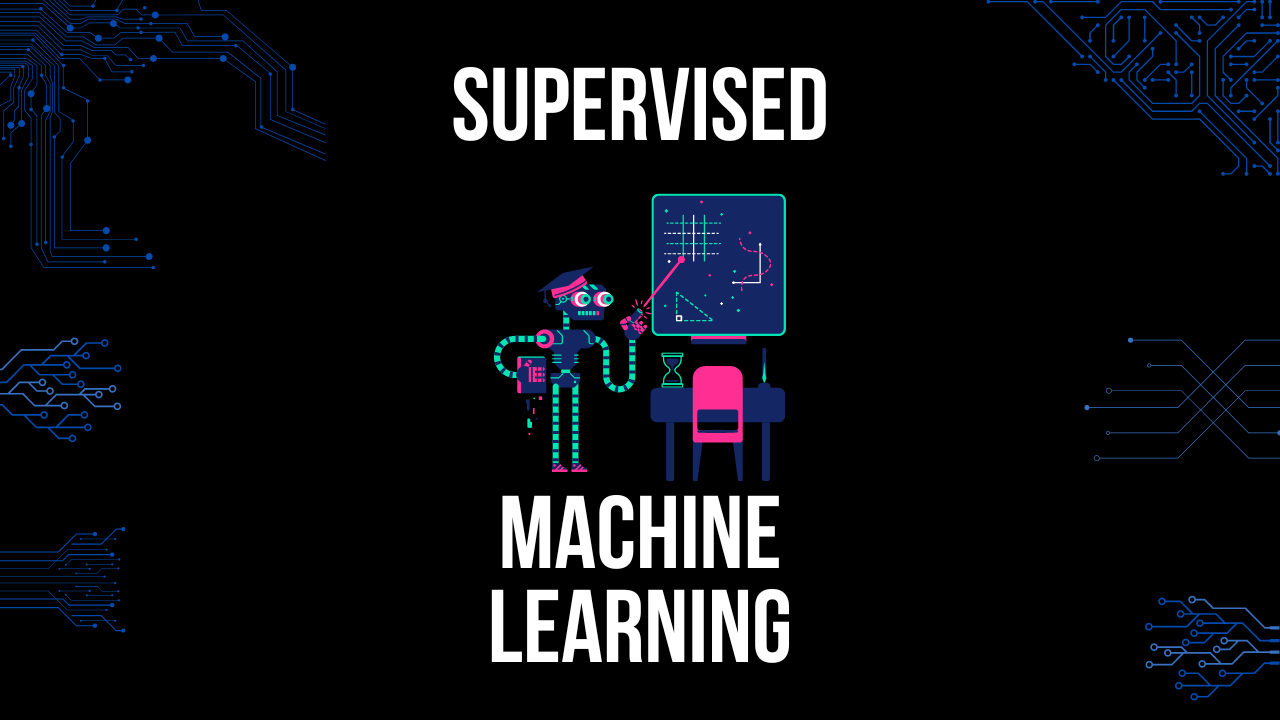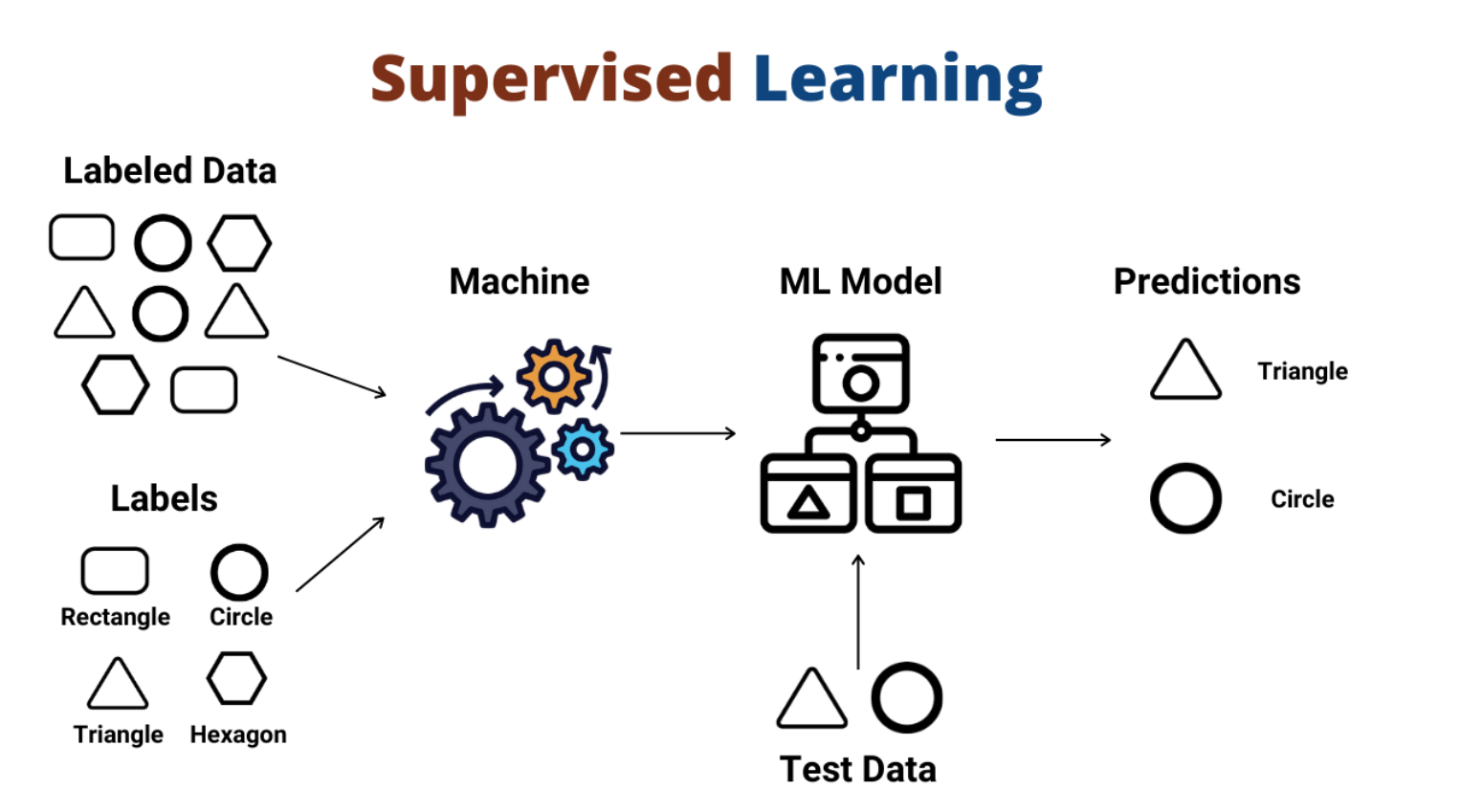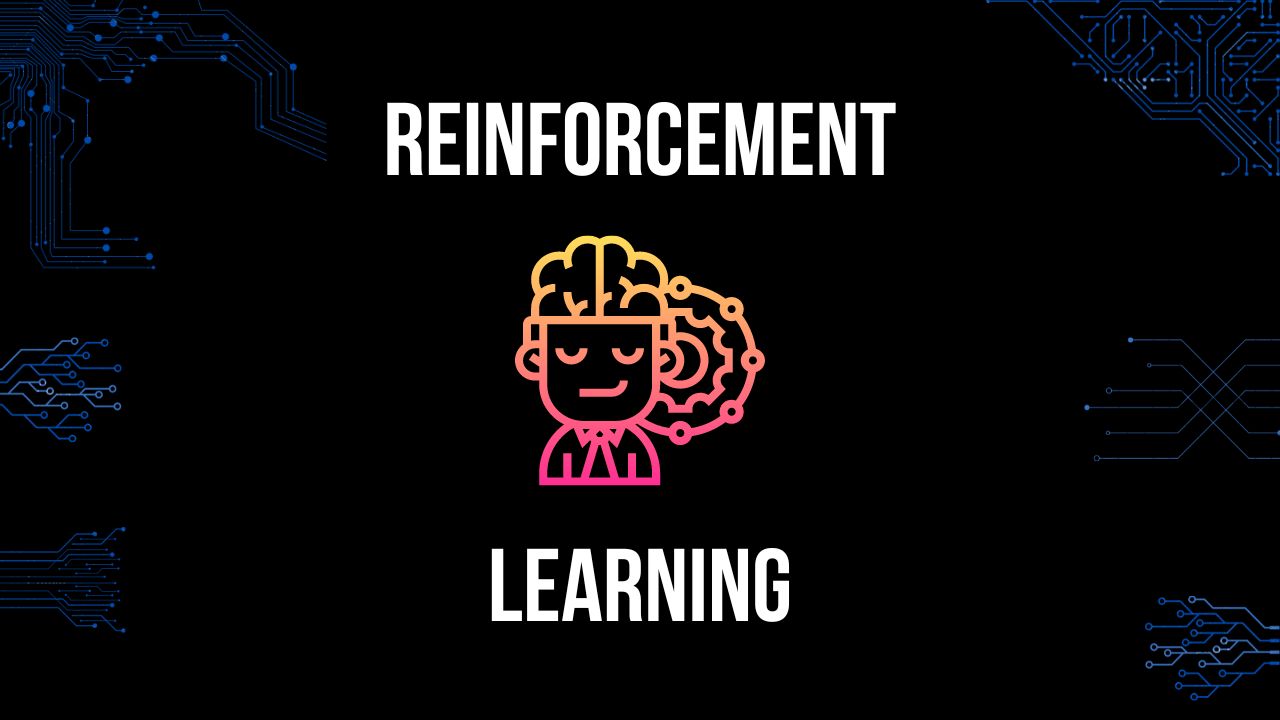
- Zainab Siddiqui
- 0
Supervised Machine Learning: What Are The Types & How It Works?
Supervised machine learning is a type of machine learning where the algorithm is trained on a labeled dataset. In other words, the dataset has both input variables and corresponding output variables that are used to train the algorithm. The goal of supervised learning is to use this labeled data to make accurate predictions or classifications on new, unseen data.

Zainab Siddiqui
March 30, 2023 – 4 min read
Machine Learning (ML) is an Artificial Intelligence (AI) wing. It refers to the process of developing programs that enhance the capabilities of machines. These programs, algorithms, or models enable machines to perform complex tasks more efficiently.
To learn, large and relevant datasets are fed to the model as input. The machine processes the data, performs mathematical calculations, and derives useful relationships from it. These relationships are further used by the machine to perform specific tasks such as prediction and classification.
However, based on the type of data used for building the model, machine learning is broadly classified into supervised learning and unsupervised learning.

In this post, we will discuss:
- What is Supervised Machine Learning?
- How Supervised Machine Learning Works?
- What are the different types of Supervised Machine Learning?
If you wish to learn about unsupervised learning, here’s a post about it.
Let’s dive in.
What is Supervised Machine Learning (SML)?
Supervised Machine Learning refers to training a model on a labeled dataset. A labeled dataset is one in which every data point aligns with a known output. It creates a model that learns from labeled data for a specific task. It can predict the result or classify new inputs as required.

In the background, the model assigns weights to the input variables to form a relationship that provides the output variable with maximum accuracy. As the model takes inputs, it adjusts those weights to find the best-fit relationship. This adjustment takes place through the cross-validation process.
For example, we have a dataset with the age, gender, city, occupation, and corresponding heart condition of individuals.
When we feed this data to a model to learn and then predict heart conditions based on age, gender, city, and occupation, we are performing supervised machine learning.

It is important to note here that the performance of machine learning models is largely dependent on the quality and quantity of data we feed to the model. For quality, some sanity checks and preprocessing steps are necessary beforehand. While for quantity, more observations make it better. However, variation is important.
Supervised Machine Learning helps organizations solve a variety of real-world problems at scale. These include financial fraud prevention, preventive healthcare, classifying spam emails, etc.
How Supervised Machine Learning Works?
In simple terms, supervised machine learning utilizes a training dataset to teach specific tasks to models. The training data contains varied observations and helps the model to learn over time. Once training is over, the model is assessed using a testing dataset.
The steps involved in the supervised learning process are as follows:
1. Data Collection: The collection of training data, including the inputs and corresponding outputs, helps create a labeled dataset. The inputs are also known as independent variables while the output is also known as the dependent variable or target variable.
2. Data Preprocessing: Preprocessing is the process of cleaning and filtering the data. It is important as it makes the data appropriate for the model input. The step includes the missing values treatment, outlier treatment, scaling numerical features, encoding categorical features, etc.
3. Model Selection: Selecting the best model for supervised machine learning is essential. Initially, it takes a hit and trial to get to the most suitable one. Some of the most commonly used supervised machine learning models are Linear Regression, Logistic Regression, Naive Bayes, Neural Networks, Support Vector Machines, KNN, Decision Trees, and Random Forests.
4. Model Training: Next, the selected model is trained on the labeled dataset. The model learns to map input features to the output labels. It adjusts the internal parameters to minimize the loss function. (The loss function measures the difference between predicted and actual output values.)
5. Model Evaluation: The model evaluation takes place on a test dataset, which has observations different from the training dataset(not used in training). The model predicts the output for the testing inputs and then, they are compared with actual testing outputs. In this way, it helps assess the model’s performance.
If the model performance is as desired and acceptable, it is deployed to perform tasks in the real world. After deployment, it works with unseen data. As the prediction or classification by the model greatly impacts business decisions, it must be performance metrics should be adequate.
What are the Different Types of Supervised Machine Learning?
Supervised Machine Learning is broadly classified into two types of problems: regression and classification.

Regression Supervised Machine Learning
Regression is used to understand the relationship between dependent and independent variables. The algorithm predicts a continuous output variable and is mostly employed for forecasting numerical values.
Regression has a wide-ranging utility in industries including but not limited to engineering, economics, retail, and finance. Some popular regression algorithms are Linear Regression, Neural Network Regression, Decision Tree Regression, Ridge Regression, Lasso Regression, and Polynomial Regression.
Classification Supervised Machine Learning
The classification algorithm can predict the class/category based on the inputs. It aims to identify the presence of patterns or relationships between inputs to determine the output class.
Classification finds applications in tasks such as image recognition, text classification, and fraud detection. Some popular classification algorithms are Logistic Regression, Support Vector Machines (SVM), Decision Tree Classifier, K-nearest neighbor (KNN), Naive Bayes, and Random Forest.

What are the Advantages of Supervised Machine Learning?
Supervised learning has many advantages over other types of machine learning. By other forms of machine learning, we are referring to reinforcement learning, unsupervised, and semi-supervised.
Some of the advantages are as follows:
1. Easy Interpretation: Supervised learning is easier to interpret than the other models. They map input features to output labels.
2. Better Control: Supervised learning allows for greater control over the learning process. The desired output is available, and it can guide the model training.
3. Accuracy: Supervised training models can often achieve higher accuracy as they can access labeled data during training.
End Note
Supervised machine learning is a powerful technique for building prediction models. It performs well for both regression and classification problems, making accurate predictions on new and unseen inputs.
However, the quality of labeled data and the quantity in which it is required is challenging at times. If either of these is compromised, the performance of the model is negatively affected.
Besides this, selecting the most appropriate model for the problem is essential. One must build multiple models and compare their performances to choose the best one. If more than one model performs well, an ensemble can be formed.
Overall, supervised learning can offer businesses advantages, and that’s why it is widely used across industries.
If you have any business problems that can be solved with data, we are here to help you out. We are just an email or call away!

The world is getting accustomed to increasing digital usage and generating tons of data daily. And there’s a lot that can be done with data. So, you’d find me experimenting with different datasets most of the time, besides raising my 1-year-old daughter and writing some blogs!






